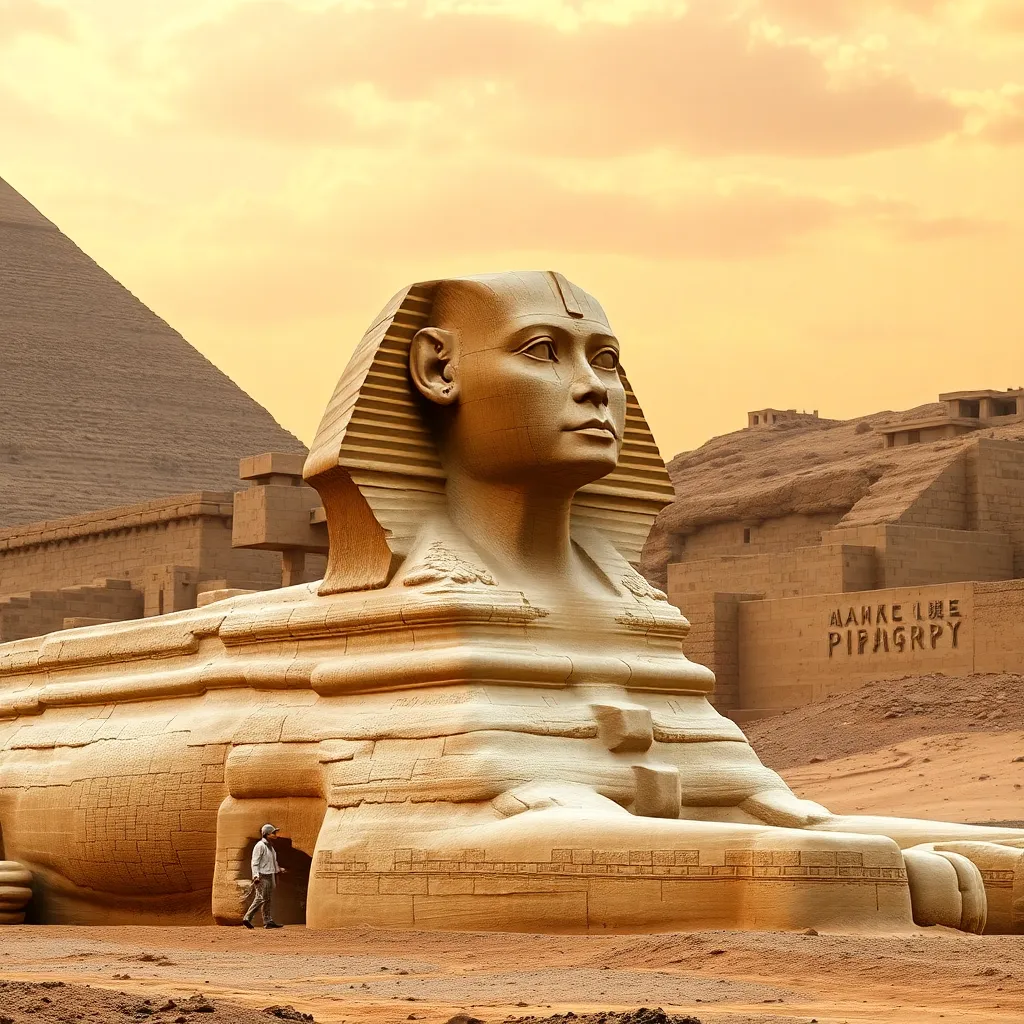The Sphinx and Its Role in Egyptian Agriculture
I. Introduction
The Sphinx, an emblematic figure of ancient Egypt, stands as a testament to the civilization’s artistic and architectural prowess. This iconic statue, with the body of a lion and the head of a pharaoh, embodies not only the grandeur of Egyptian culture but also reflects the integral role of agriculture in sustaining its society. Ancient Egyptians were deeply connected to their agricultural practices, heavily relying on the fertile lands of the Nile River. This article aims to explore the multifaceted connection between the Sphinx and agricultural practices, shedding light on its symbolism, historical context, and significance in ancient Egyptian life.
II. Historical Context of the Sphinx
The Great Sphinx of Giza, believed to have been built during the reign of Pharaoh Khafre around 2500 BCE, is one of the most recognizable landmarks in the world. Its construction is attributed to the same period that saw the building of the nearby pyramids, signifying a time of immense architectural achievement.
Situated on the Giza Plateau, the Sphinx overlooks the western horizon, where the sun sets—a symbol of the afterlife in ancient Egyptian belief. Many myths and legends surround the Sphinx, including its role as a guardian of sacred sites and its association with the god Horus. Tales of riddles and challenges posed by the Sphinx have also permeated popular culture, emphasizing its enigmatic nature.
III. The Role of Agriculture in Ancient Egypt
Agriculture was the backbone of ancient Egyptian civilization. The Nile River, often referred to as the lifeblood of Egypt, provided the necessary water for irrigation and fertile land for crop cultivation. The annual flooding of the Nile deposited nutrient-rich silt on the banks, allowing for successful harvests of staple crops such as:
- Wheat
- Barley
- Flax
- Lotus
Ancient Egyptian agricultural practices were closely aligned with the seasonal cycles, which were divided into three main seasons:
- Akhet (Inundation): June to September, when the Nile flooded.
- Peret (Emergence): October to February, when the land was cultivated.
- Shemu (Harvest): March to May, when crops were harvested.
IV. Symbolism of the Sphinx in Relation to Fertility and Agriculture
The Sphinx served as a powerful symbol of protection and guardianship over the lands and its people. In the context of agriculture, it represented the safeguarding of crops and the prosperity of the land. The Sphinx is often associated with various agricultural deities, most notably Osiris, the god of fertility, agriculture, and the afterlife. Osiris’s resurrection and the fertility of the land were intertwined, and the Sphinx, as a guardian figure, was believed to protect the crops from malevolent forces.
The imagery of the Sphinx itself may also reflect themes of fertility. Its lion’s body symbolizes strength and protection, while its human head signifies intelligence and wisdom, attributes essential for successful agricultural stewardship.
V. The Sphinx and Agricultural Land Management
The presence of the Sphinx likely influenced land planning and irrigation strategies in ancient Egypt. Monumental architecture such as the Sphinx served as landmarks that could delineate agricultural territories, guiding farmers in their endeavors. The alignment of such structures with the Nile and the surrounding landscape may have played a crucial role in maximizing agricultural output.
Additionally, the construction of the Sphinx and other monumental buildings demonstrated the resources available to the Egyptians, allowing them to engage in large-scale agricultural projects. The Sphinx’s position might have also aided in the management of irrigation systems, ensuring that water was distributed effectively across farmlands.
VI. Rituals and Festivals Linked to Agriculture and the Sphinx
Ancient Egyptians held numerous agricultural festivals that celebrated the cycles of planting and harvesting. These festivals often involved rituals to honor deities associated with agriculture and fertility. The Sphinx, as a significant cultural symbol, may have played a role in these events.
For instance, during the Wepet-Renpet festival, which marked the beginning of the agricultural year, offerings would be made to ensure a bountiful harvest. The Sphinx could have served as a focal point for such celebrations, reinforcing its importance within the agricultural calendar.
VII. Archaeological Evidence and Research Findings
Archaeological discoveries have provided insights into the Sphinx’s connection to agricultural practices. Studies of the surrounding landscape reveal evidence of ancient irrigation systems that facilitated farming in the region. Researchers have also identified remnants of agricultural tools and storage facilities, indicating the area’s historical use for crop production.
Egyptologists have analyzed these findings, suggesting that the Sphinx was not merely a monumental structure but also intertwined with the agricultural life of the people. The Sphinx’s presence may have been a reminder of the divine oversight of the land and its fertility.
VIII. Conclusion
The Great Sphinx of Giza serves as a powerful emblem of ancient Egyptian civilization, representing the intricate connections between culture, spirituality, and agriculture. Its role as a protector of the land, its associations with agricultural deities, and its influence on land management practices highlight the multifaceted significance of the Sphinx in the context of ancient Egyptian agriculture.
As we reflect on the Sphinx’s enduring legacy, it is essential to recognize its place in modern agricultural practices and cultural heritage. The preservation of such historical connections to agriculture enriches our understanding of the past and informs our relationship with the land today.




